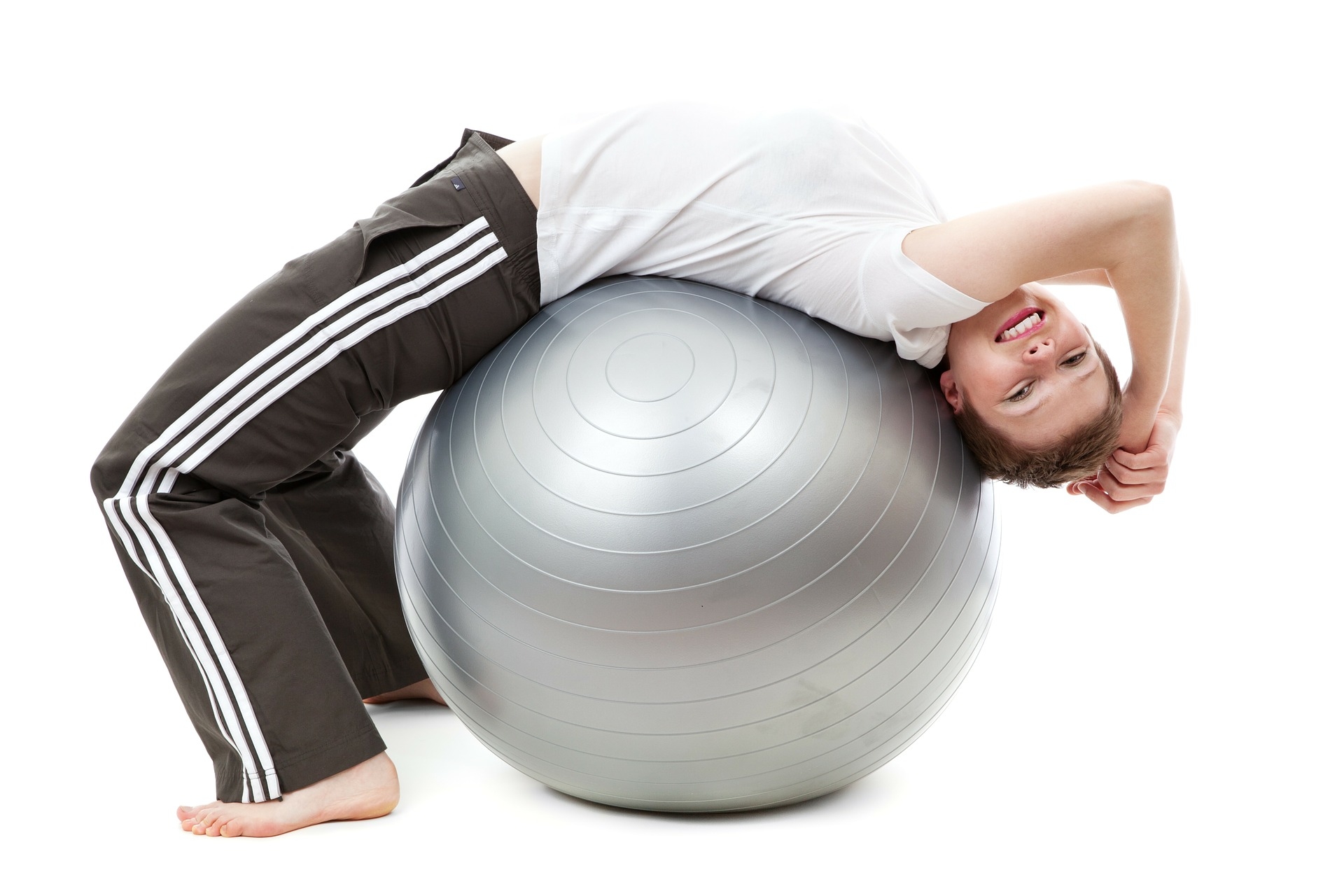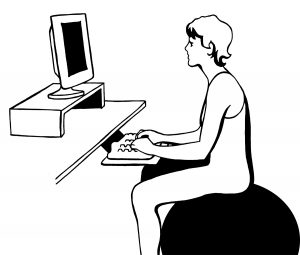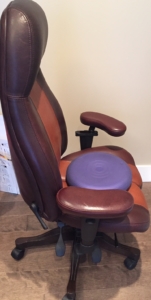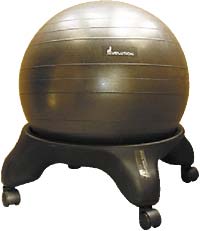
- Feb 02, 2017 |
- Ergonomics Blog, Sit to Stand Options
Finding Your Balance

by Shona Anderson, CCPE
Your neighbour’s doing it! Your office mate has one! You have back pain and you want to try. FitBalls or Exercise Balls have been appearing in the office for about a decade now as employees search for solutions to the discomfort they experience from sitting at a computer all day. The prominent thoughts are that Fitballs require you to maintain balance through the use of your “core muscles” (back, abdominals, and gluteals) and that sitting on a ball will strengthen these muscles and improve posture and reduce discomfort. As much as strengthening muscles is a good idea and the FitBall is one of many good tools that can help to accomplish this action, most people are not fit enough to sit on them for the entire day!
You wouldn’t go and work out at the gym for the whole day, nor would you do sit-ups or rowing the whole day, so why would you “work out” on the FitBall at the office all day???
Anderson Ergonomics Consulting believes that the problem with FitBalls in the office lies in the fact that employees, who may or may not be fit already, are giving up their chairs, which provide support for the back, especially the key “lumbar curve”, and using these balls as a chair.
Good “Neutral” Back Posture Slumped Posture – Lack of Lumbar Curve
After only a short time, most people will move from the good “neutral back position” to a “slumped position”, where they are putting pressure on the discs in their back and causing their lower back and gluteal muscles to work harder to support the unnatural posture. Over time, this “slumped” position and lack of back support can increase muscle stress in the back, between the shoulder blades, cause the shoulders to roll forward and the chin to jut forward. We have also heard of safety issues related to the use of FitBalls in offices; specifically people falling off them when they move and the ball rolls away and especially as their muscles fatigue.
Anderson Ergonomics Consulting does not generally promote the use of FitBalls in the office environment, however, it is about finding a balance between sitting too long and moving your body. If you feel a strong urge to use an alternative to a regular chair, either at the office or at home, the following tips are recommended to ensure you remain safe and healthy on the ball:
- Most Important: Keep a good chair nearby (with good back and lumbar support) and move your body into it once you feel yourself slump / slouch on the ball.
- Ensure the FitBall is sized and inflated properly for you. When sitting on it, your hips are more open than they would be when sitting on a regular chair. The hips are likely bent should be bent at between a 110 – 130 degree angle (NEVER have your knees higher than your hips) and your knees should be at approximately 90 degrees. Your feet should be able to sit flat on the floor, not just your toes tucked in behind you or beside the ball. You can get different sized balls so ensure the one you purchase is sized for your height.
- Maintain the Natural Curve of your Spine. You should be sitting upright on the ball, with your weight equally distributed between your butt cheeks and ideally, with equal weight between your feet on the floor. Your chest should be pointed forward and your shoulders back. You can do this by squeezing your shoulder blades together. Keep your chin level and your ears over your shoulders. You will likely feel your upper back muscles working here to maintain this posture. This is part of the “working of the muscles” that you are trying to achieve. You will also likely feel your abdominal muscles tighten. All of this is part of using the ball.
- Move off the ball onto your chair once you feel your muscles fatigue and you want to slouch your body. Sit back in your chair so you use the backrest to help relax your muscles. Once the muscles are fully relaxed, you may return to the ball. Anderson Ergonomics Consulting recommends that you take at least as long off the ball as you are on it (so if you sit on it for half an hour, then sit on the chair for at least half an hour).
- It is recommended that you gradually increase the amount of time spent on a FitBall. When you first get it, you may find that you start to fatigue and “slump” after only 5 minutes but that over time, you can sit on the ball for longer periods before you fatigue. So introduce the ball for a short period of time initially and gradually increase the time frame used.
- Remain aware of what you are doing when on a FitBall. People have fallen off FitBalls and seriously hurt themselves. Some companies have banned their use for this very reason. When you move, ensure the ball doesn’t move away from you.
- Stand up and move around at least once per hour, no matter if you are sitting in a good chair or on a fitball. This will enable your muscles to stretch and bring blood to them, helping you feel more energized.
- Consider using a Sitting Disc or an Evolution chair, rather than a FitBall. The Disc is the same ball material and has a similar result of having to use your “core muscles” but allows you to remain sitting on your normal office chair. The benefit is that you still have a backrest and armrests to keep you safer as you tire. The Evolution chair has casters on it, thus acts more like a regular chair in its movement (thus hopefully, less risk of falling off!).
Finally, remember that a FitBall should never be a replacement for a good chair. See our website for more information on setting up an office workstation, adjusting your chair, and many other topics. www.anderson-ergo.ca






